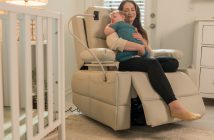Are you or a loved one getting ready to move into an assisted living facility?
There comes a time in most people’s lives where they discover that they can’t (or don’t want to) deal with the struggles of maintaining a home or living alone in an apartment.
They want to spend their twilight years in a safe and fun community amongst other like-minded seniors. They may also need extra help with their health or daily activities.
This is when it’s time to start looking into assisted living options.
Choosing a retirement community isn’t as easy as it seems on the surface. There are several different levels of assisted living, and different people will need different ones. They may even end up transitioning through levels.
Not sure where to get started? We’re here to help. Keep reading to learn all about your various senior living options.
Independent Living
Independent living is the first level of care for people who choose to move into senior communities.
With independent living communities, seniors get their own homes or apartments (depending on the community and the needs of the senior). These homes often have options for multiple people sharing a single place, like married couples.
With independent living, community members live amongst other seniors as if they were in an apartment complex or gated community. They don’t receive much extra care day-to-day, and they live as they would at home without the pressure to maintain a home and with the added security of caregivers nearby.
These communities often have many fun amenities so that seniors don’t have to worry about leaving. They have exercise options, enrichment opportunities, learning opportunities, and social gatherings.
When people aren’t feeling up to engaging with others, they can stay in their own apartments.
Many seniors enjoy independent living because it gives them more independence than living at home or living with family members.
Who Is It for
Independent living is for any seniors who are ready to make their lives easier.
Because independent living communities don’t offer full-time help or care, they’re best for people who are still good at taking care of themselves and doing simple housework.
They will still cook and clean (though food will be available) but may get occasional assistance when they need it.
These seniors want to stay active and maintain healthy social lives. Basically, they want 5-star hotel living while still maintaining some autonomy over their lives and space.
True Assisted Living
True assisted living communities are the next step up from independent living.
In these communities, residents will live in their own apartments. There will be 24-7 staff available to help them.
These communities also offer enrichment options and social opportunities. It’s crucial to keep seniors engaged as they age, so part of the assistance that the community gives is devoted to that.
This is a more restrictive option than independent living. There’s more monitoring involved, and residents have less control over their surroundings.
Assisted living is often more expensive than independent living because of the extra care that it provides.
Who Is It for
Assisted living is best for seniors who need extra help with their day-to-day lives.
These people may have illnesses or mobility challenges that make it hard for them to cook, clean, or even take care of themselves. In assisted living facilities, residents get help with bathing, using the restroom, household chores, getting dressed, remembering medications, and more.
Although resistents of assisted living facilities need help, they are still somewhat independent and want to live independent lives. They’re interested in a comfortable lifestyle.
Many seniors object to assisted living. They want to feel independent, and like they can take care of themselves. Make sure that you talk about all of the benefits that assisted living has to offer. Check out Assisted Living – The Ultimate Guide for more info.
Skilled Nursing or Nursing Homes
This is the highest level of care. When you or your loved one moves into a skilled nursing facility (otherwise known as a nursing home), it means that there’s a need for a lot of extra help.
These are the most expensive and most restrictive senior living homes, and for a good reason. There’s full-time high-quality care for every resident, no matter how difficult their situation is.
There are on-site medical professionals, and there are several tiers of care depending on the needs of the resident.
Seniors will still have social opportunities and enrichment, but they won’t be able to travel as freely as they can in other communities for their own safety.
Who Is It for
Nursing homes are for seniors who have debilitating illnesses or severe mobility issues. They may require constant care or monitoring. These seniors are often elderly, and they may make regular hospital visits before they move into the facility.
One particular branch of skilled nursing is memory care. This care is specifically for people who are suffering from any type of dementia.
In memory care facilities, caregivers make sure that residents don’t wander or hurt themselves. They provide opportunities for enrichment to help seniors maintain their cognitive abilities.
Overall, nursing homes are for people who are no longer safe living at home or in lower levels of assisted senior living.
Assisted Living Options: Which Is the Right Choice?
When it comes to assisted living options, it can be difficult to decide which one is appropriate. It will require a difficult conversation with the senior in your life.
Consider how much help they need and whether or not they’re still able to live independently. Remember, moving into a facility should help them live a more comfortable life.
For more helpful posts about family, health, and more, visit the rest of our site.





This works really well for us, thank you! Facing same issue here. Help is appreciated.